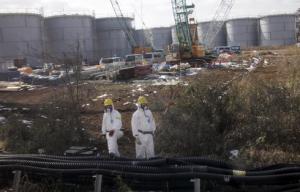Nuclear accidentsFukushima’s lesson: Better real-time monitoring of spent fuel pools is a must
The 2011 Fukushima Daiichi nuclear accident should serve as a wake-up call to nuclear plant operators and regulators on the critical importance of measuring, maintaining, and restoring cooling in spent fuel pools during severe accidents and terrorist attacks, says a new report from the National Academies of Sciences, Engineering, and Medicine.

Investigators touring the Fukushima Daiichi grounds // Source: theconversation.com
The 2011 Fukushima Daiichi nuclear accident should serve as a wake-up call to nuclear plant operators and regulators on the critical importance of measuring, maintaining, and restoring cooling in spent fuel pools during severe accidents and terrorist attacks, says a new report from the National Academies of Sciences, Engineering, and Medicine. This report is the second and final phase of a congressionally mandated study on what lessons can be learned from the Fukushima Daiichi nuclear accident. The report from Phase 1 of this study was released in July 2014. The Phase 2 report provides findings and recommendations for improving U.S. nuclear plant security and spent fuel storage as well as re-evaluates conclusions from previous Academies studies on spent fuel storage safety and security.
NAS reports that the committee that carried out the study and authored the Phase 2 report found that spent fuel storage facilities — both spent fuel pools used to store fuel under water and casks used to dry-store fuel — at the Fukushima Daiichi nuclear plant maintained their containment functions during and after the 11 March 2011, Great East Japan Earthquake and tsunami. However, one of the two gates separating the Unit 3 spent fuel pool from the adjacent reactor well was damaged during the accident. Also, water appeared to have leaked around the gate seals in the Unit 4 spent fuel pool, allowing water to flow into the pool from the reactor well.
This water leak was accidental but also fortuitous, because it replenished water lost from the Unit 4 pool by evaporation, likely preventing water levels from dropping to the tops of the racks where the spent fuel was being stored. Keeping the fuel covered with water is essential for cooling and radiation shielding. Uncovery of the fuel would have substantially increased radiation levels above and around the pool, limiting personnel access to the pool and nearby areas, and could have resulted in severe damage to the fuel, increasing the potential for large radioactive material releases into the environment.
